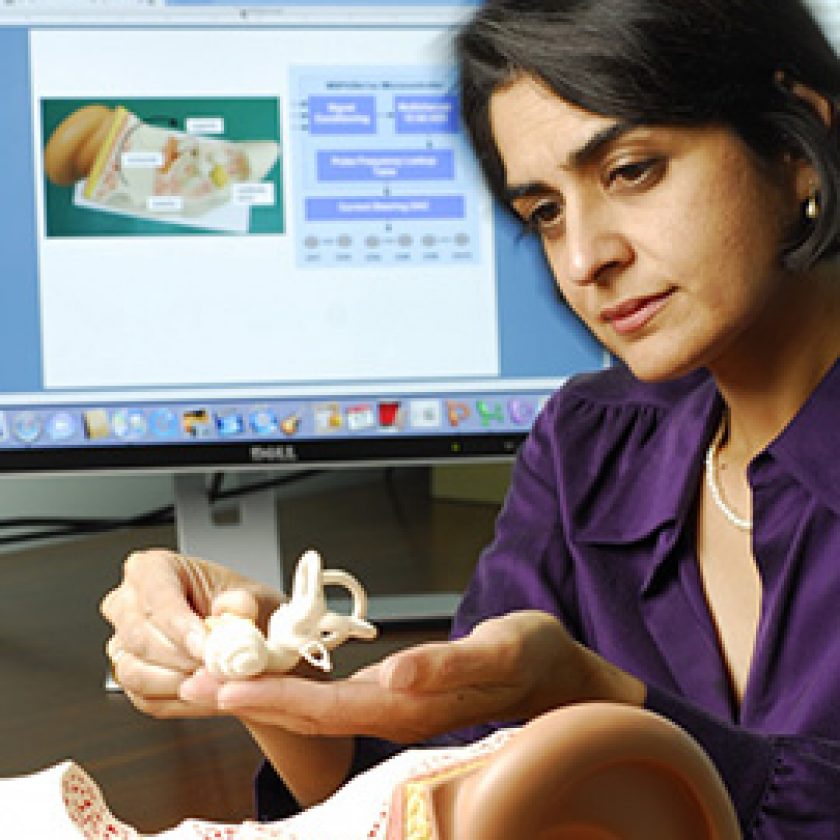Abstract
Dysfunctions in the vestibular (balance) system often lead to debilitating symptoms of vertigo, disorientation, visual blurring and falls. Falls are the leading cause of fatal and non-fatal injuries for persons over 65 years of age. A vestibular prosthesis could greatly improve the quality of life for individuals with bilateral vestibular dysfunction who currently have no other therapeutic option. In such a prosthesis otherwise-absent head angular and linear motion cues are captured via inertial sensors, processed, and replaced by direct and selective electrical stimulation of vestibular nerve elements. In this talk I will discuss our Micro-electro Mechanical Systems (MEMS)-based approach to realizing this class of next-generation sensory replacement implants where there exists a need to significantly reduce system power and effectively stimulate vestibular nerve fibers. As a passive alternative to commercial gyroscopes to measure angular head rotations, we are developing a microfabricated fluidic sensor inspired by the human angular rotation sensor, the semicircular canal. Parallel to sensor development is our effort in providing low-power analog signal processing circuitry to effectively code head motion and generate appropriate electrical stimuli. Laying the foundation for vestibular prosthesis, cochlear prostheses provide functional hearing to nearly 200,000 profoundly hearing-impaired or deaf patients worldwide by electrically stimulating auditory nerve fibers. Although such implants have been remarkably effective, there remains significant variation in speech perception as well as difficulty in perceiving speech in noisy environments. I will discuss our ongoing work in advanced electrode array development to more effectively activate the cochlea’s surviving neural population, as well as reduce surgical trauma introduced during array insertion.
Biography
Since 2007, Dr. Pamela Bhatti has been an Assistant Professor in the School of Electrical and Computer Engineering at Georgia Tech in Atlanta, GA. She received a B.S. in Engineering Science (Bioengineering) from the University of California, Berkeley in 1989, an M.S. in Electrical Engineering from the University of Washington in 1993, and a Ph.D. in Electrical Engineering from the University of Michigan, Ann Arbor in 2006 with an emphasis on MEMS. Before completing her Ph.D., she researched the detection of breast cancer with ultrasound imaging at the University of Michigan’s Department of Radiology (1997-1999). Her industry experience includes embedded systems software development at Microware Corporation, Des Moines, IA (1996-1997), local operating network applications development at Motorola Semiconductor in Austin, TX (1994-1995), and research and fabrication of controlled-release drug delivery systems at Alza Corporation in Palo Alto, CA (1986-1990). Pamela received the NSF CAREER Award in 2011. Committed to translating technology to the clinical setting, she is a KL2 Scholar with the Atlanta Clinical and Translations Sciences Institute and holds the rank of Adjunct Assistant Professor of Rehabilitative Medicine with the Emory University School of Medicine.


